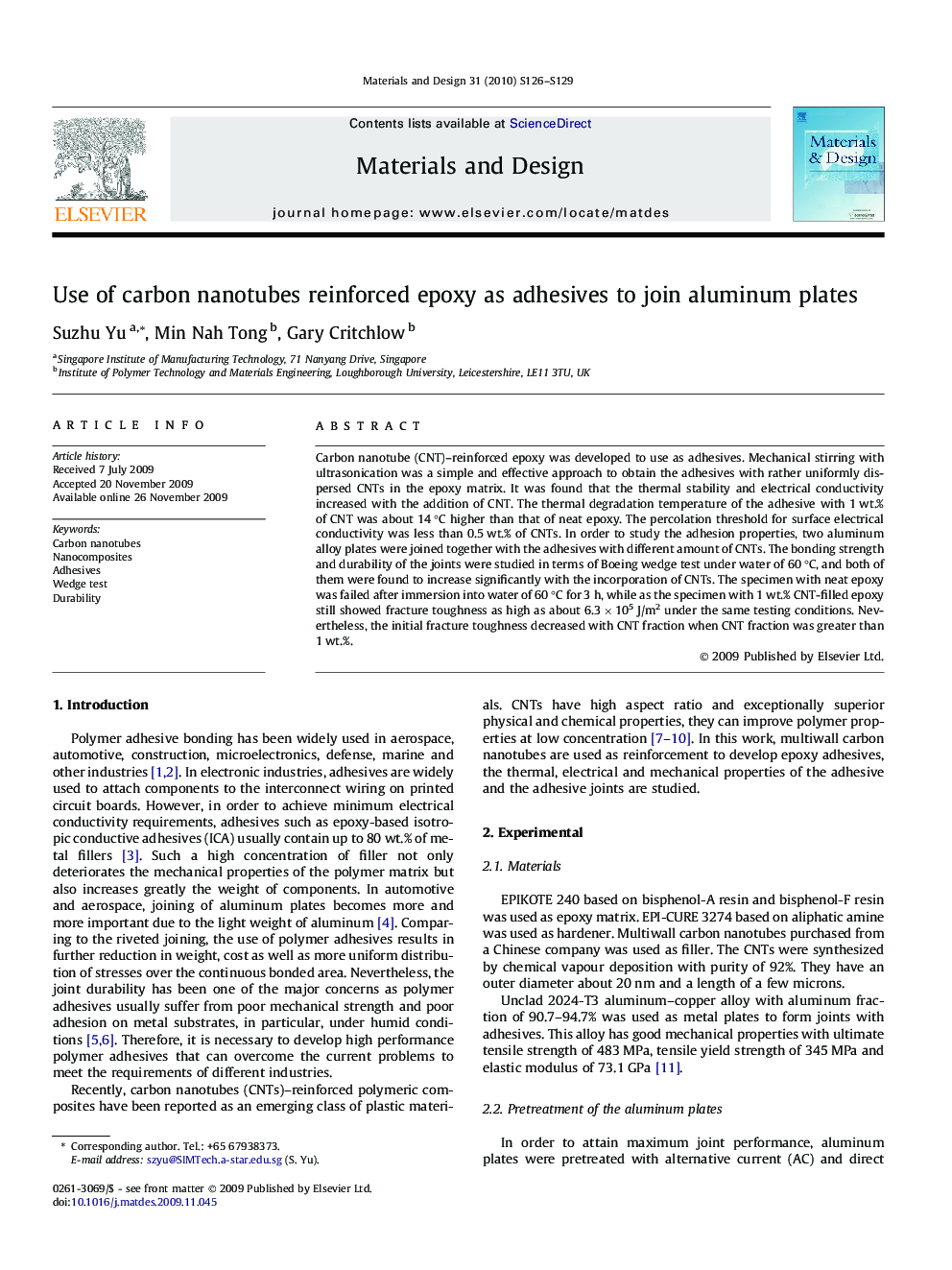| Article ID | Journal | Published Year | Pages | File Type |
|---|---|---|---|---|
| 832376 | Materials & Design (1980-2015) | 2010 | 4 Pages |
Carbon nanotube (CNT)–reinforced epoxy was developed to use as adhesives. Mechanical stirring with ultrasonication was a simple and effective approach to obtain the adhesives with rather uniformly dispersed CNTs in the epoxy matrix. It was found that the thermal stability and electrical conductivity increased with the addition of CNT. The thermal degradation temperature of the adhesive with 1 wt.% of CNT was about 14 °C higher than that of neat epoxy. The percolation threshold for surface electrical conductivity was less than 0.5 wt.% of CNTs. In order to study the adhesion properties, two aluminum alloy plates were joined together with the adhesives with different amount of CNTs. The bonding strength and durability of the joints were studied in terms of Boeing wedge test under water of 60 °C, and both of them were found to increase significantly with the incorporation of CNTs. The specimen with neat epoxy was failed after immersion into water of 60 °C for 3 h, while as the specimen with 1 wt.% CNT-filled epoxy still showed fracture toughness as high as about 6.3 × 105 J/m2 under the same testing conditions. Nevertheless, the initial fracture toughness decreased with CNT fraction when CNT fraction was greater than 1 wt.%.
